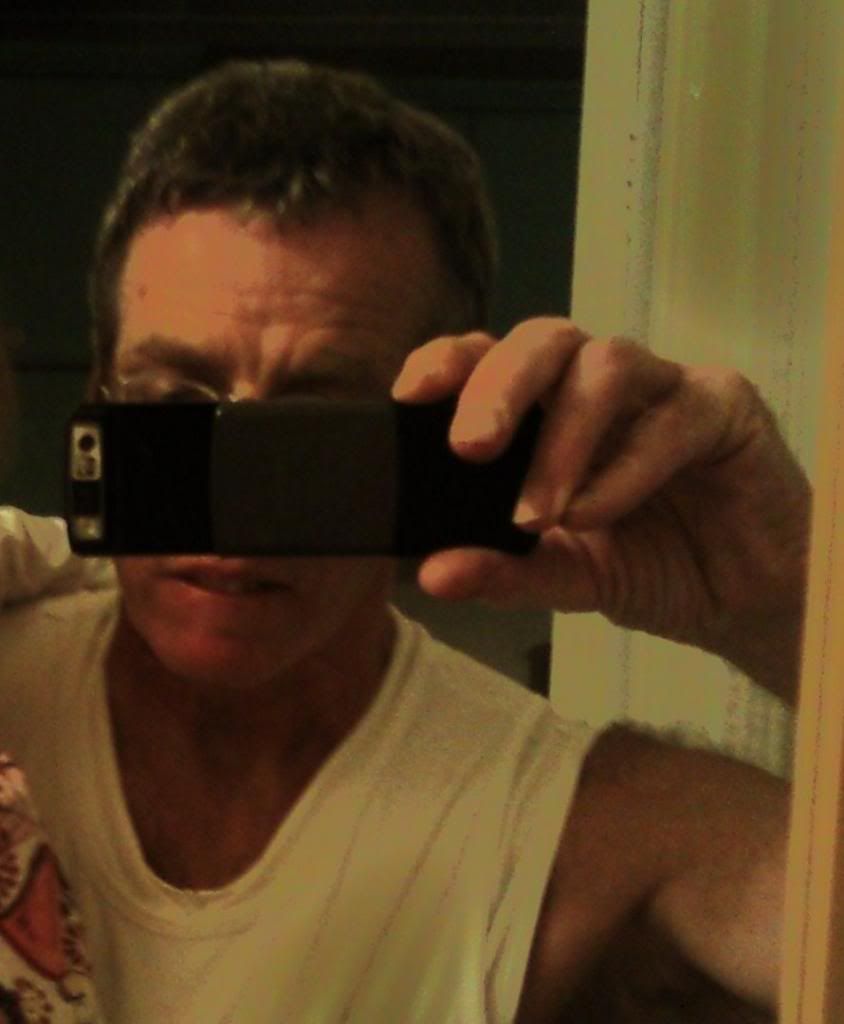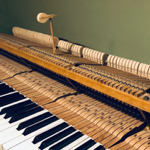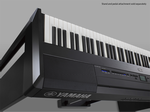 |
Welcome to the Piano World Piano Forums
Over 3 million posts about pianos, digital pianos, and all types of keyboard instruments.
Over 100,000 members from around the world.
Join the World's Largest Community of Piano Lovers
(it's free)
It's Fun to Play the Piano ... Please Pass It On!
|
|
|
|
66 members (Animisha, Barly, bobrunyan, 1200s, 36251, benkeys, 20/20 Vision, anotherscott, 10 invisible),
1,828
guests, and
312
robots. |
|
Key:
Admin,
Global Mod,
Mod
|
|
|
|
Joined: Jan 2014
Posts: 361
Full Member
|

Full Member
Joined: Jan 2014
Posts: 361 |
For example, I play with Pianoteq and I never set the dynamic range higher than 38-39. This value gives me a realistic sensation. I have read some post from users that set the dynamics to 50 or even more... That gives a better control on the software but it's totally artificial. This is a strong assertion. Pianoteq is trying to accurately model a piano. What leads you to believe that, for example, 100 on Pianoteq is artificial and not like an ffff note would be on the actual acoustical instrument being modeled? Because if the model is inaccurate above 39, then I think this is a huge flaw in Pianoteq. I believe the Pianoteq engineers, having access to the specific instrument they are creating the model for, tried to create a model that accurately reflected the particular instrument they are modeling whether at a level of 1, 38, 50, or 100. I'd like to hear why you think the model is less accurate above 39, than it is below. Ok, I haven't played a lot of acoustics, but at least on mine and my teacher's and some other I tried, I found that they are more difficult to control than my DP. As for the Dymanic vaue in Pianoteq, you can see that most of the factory player/prelude/home presets have a value around 40. Don't forget that this value is also in interaction with the kb sensitivity. At least, in my setup, with a Roland HP-507 which has a PHA-III kb, the sensitivity at 45 (a little lighter than the factory value) on the Roland and the Dynamic at 39 on Pianoteq, gives me something that I can qualify as accurate.
Last edited by stamkorg; 05/31/19 01:15 PM.
|
|
|
|
|
Joined: Jul 2012
Posts: 10,512
Yikes! 10000 Post Club Member
|

Yikes! 10000 Post Club Member
Joined: Jul 2012
Posts: 10,512 |
I can easily achieve 127 if I want that loudest sound, and tone. Although that is still unachievable on a digital - on an acoustic grand, the thing virtually explodes when you hammer those low notes in a crescendo. NO digital or software piano does that, to my knowledge.
However, anyone can adjust the feel and response of the sound and tone through the velocity curve. Mine starts at pp (there is always a sound when a key is depressed; no point in pressing it if it doesn't) and fff usually happens around 100 on the horizontal scale.
The dynamic range is determined by the sliding scale, so there's all the tools to do the job if anyone wants to.
But I would concur with the poster. An acoustic upright is loud even when played quite gently and it would seem there's little you can do about it.
It's either megabucks on a "B" or a "D", or PTQ or similar. I'm after a VPC2. I can wait.
Last edited by peterws; 05/31/19 01:33 PM.
"I am not a man. I am a free number" " ![[Linked Image]](https://www.pianoworld.com/Uploads/files/Joplinbadgetiny.jpg) "
|
|
|
|
|
Joined: Dec 2018
Posts: 1,821
1000 Post Club Member
|

1000 Post Club Member
Joined: Dec 2018
Posts: 1,821 |
I'm after a VPC2. I can wait. I would also like that to be released, but as long as the vpc1 is the best virtual piano controller out there, i think Kawai won't be in a hurry with it. When will the first hybrid virtual piano controller be released? 
|
|
|
|
|
Joined: Apr 2018
Posts: 9,824
9000 Post Club Member
|

9000 Post Club Member
Joined: Apr 2018
Posts: 9,824 |
127 and 1 should be almost unachievable like they are on grand piano. BTW what is strange is that I can more easily play on acoustic than on digital, I mean ppp wise. So completely other way around some of you say. I was recently playing Novus NV10 and one of the Shigeru Kawais(SK-5 or SK-6) and I definitely could play more quiet on acoustic Kawai. Well, as I mentioned above, I think 127 is just shy of the string breaking level on an acoustic. Some pianists are very good at breaking strings so they definitely get past 127.
![[Linked Image]](https://forum.pianoworld.com//gallery/42/medium/12282.png) across the stone, deathless piano performances "Discipline is more reliable than motivation." -by a contributor on Reddit r/piano "Success is 10% inspiration, and 90% perspiration." -by some other wise person "Pianoteq manages to keep it all together yet simultaneously also go in all directions; like a quantum particle entangled with an unknown and spooky parallel universe simply waiting to be discovered." -by Pete14
|
|
|
|
|
Joined: Oct 2007
Posts: 3,836
3000 Post Club Member
|

3000 Post Club Member
Joined: Oct 2007
Posts: 3,836 |
Guys, just buy an acoustic piano if you want something that feels like a real piano. Here's a good start: https://www.pianomart.com/buy-a-piano/view?id=37313  As an aside, if some of you invested the time you spend on these forums actually "practicing", you would be concert pianists by now. 
Last edited by Jethro; 05/31/19 02:06 PM.
|
|
|
|
|
Joined: Apr 2007
Posts: 7,268
7000 Post Club Member
|

7000 Post Club Member
Joined: Apr 2007
Posts: 7,268 |
What I’m trying to say is there’s no standard. When one makes the software and then there are so many MIDI controllers it becomes impossible to create a proper response by just approximating vague categories such as pp or ffff and then mapping them to velocities of hammers taking in mind it’s not just volume change but also timbre change.
I’ve never had difficulties being expressive and creating the exact dynamic I want on an acoustic piano. However in digital pianos despite them being “easy†I’ve always struggled with dynamics. Until N1X. Proper response is an art. Only a few digital manufacturers (or should I say only one manufacturer) seem to master it.
Last edited by CyberGene; 05/31/19 02:40 PM.
|
|
|
|
|
Joined: Aug 2011
Posts: 6,272
6000 Post Club Member
|

6000 Post Club Member
Joined: Aug 2011
Posts: 6,272 |
Acoustics are not all the same. How hard it is to play ppp will depend on the condition of the action and voicing of the hammers. Digitals are also not all the same. That should be obvious from all the different models and price points....
For the vast majority of either, you can find one of the other that's easier, and one that's harder.
-- J.S. ![[Linked Image]](https://www.pianoworld.com/forum/gallery/42/thumbs/7588.jpg) ![[Linked Image]](https://www.pianoworld.com/forum/gallery/42/thumbs/7589.jpg) Knabe Grand # 10927 Yamaha CP33 Kawai FS690
|
|
|
|
|
Joined: Sep 2009
Posts: 14,439
Yikes! 10000 Post Club Member
|

Yikes! 10000 Post Club Member
Joined: Sep 2009
Posts: 14,439 |
Come on, guys. We really don't know what Pianoteq did, or what they tried to do. We can only judge the results. What leads you to believe that, for example, 100 on Pianoteq is artificial and not like an ffff note would be on the actual acoustical instrument being modeled?
...
I believe the Pianoteq engineers ... tried to create a model that accurately reflected the particular instrument they are modeling whether at a level of 1, 38, 50, or 100. That last sentence might reflect what you (or I) would want. But we cannot say anything about what they did.
|
|
|
|
|
Joined: Jun 2018
Posts: 95
Full Member
|

Full Member
Joined: Jun 2018
Posts: 95 |
Yes I agree,
Especially the pp or ppp nuance is easier to play on a digital than on an acoustic. Interesting thread . . . i haven’t found this to be true on my Yamaha P515. Has taken a lot of adjustment to get to where i can play softly and still have enough dynamic range. Played a Steinway model B a couple days ago, and still feel it’s much easier to play softly on an acoustic. I've experienced this as well with the Yamaha CLP-645. Last week I played a Roland HP-603A followed by the Yamaha. It was significantly easier to control the dynamics on the Roland than the Yamaha. Maybe this is due to the higher static weight of the NWX action?
|
|
|
|
|
Joined: Apr 2018
Posts: 679
500 Post Club Member
|
OP

500 Post Club Member
Joined: Apr 2018
Posts: 679 |
I spent time comparing an ES8 / P515 side by side recently and I did notice that the initial resistance on the NWX action would sometimes trip me up when playing pp.
|
|
|
|
|
Joined: Oct 2018
Posts: 127
Full Member
|

Full Member
Joined: Oct 2018
Posts: 127 |
Yes I agree,
Especially the pp or ppp nuance is easier to play on a digital than on an acoustic. Interesting thread . . . i haven’t found this to be true on my Yamaha P515. Has taken a lot of adjustment to get to where i can play softly and still have enough dynamic range. Played a Steinway model B a couple days ago, and still feel it’s much easier to play softly on an acoustic. I've experienced this as well with the Yamaha CLP-645. Last week I played a Roland HP-603A followed by the Yamaha. It was significantly easier to control the dynamics on the Roland than the Yamaha. Maybe this is due to the higher static weight of the NWX action? No. Roland's are just made that way. They are overly expressive. Yamaha is far closer to acoustic, but in both you can change it with two clicks. It's just default level that is set differently. Generally Roland pianos should have sensivity on -1
|
|
|
|
|
Joined: Apr 2019
Posts: 217
Full Member
|

Full Member
Joined: Apr 2019
Posts: 217 |
What someone finds easy or difficult also has to do with his abilities. For example, beginners and less advanced students play better on an instrument that allows less expressivity. It can be compared to computer software etc.. Many people buy simple software because they can't use certain functions anyway. If a student is allowed to play a real Stradivarius violin, he is usually very disappointed, because he can play better on his cheap violin. The reason is simple: The Stradivari reacts very sensitively to all nuances due to the deep and many tonal possibilities. On the DP market there are now many possibilities for different playing abilities. But since the buyers are mostly beginners or not very advanced, DP are often produced (and highly praised by users) which are easy to play and don't require much playing experience. That's my impression...
Kawai VPC1, Nektar Impact GXP61+88
Past: "Fazer" acoustic piano, Yamaha P120, Roland JV90, M-audio and Novation Midi Keyboards
other instruments: electric and acoustic violins, Wal custom 4 string e-bass, Sire V7 fretless e-bass, Musser vibraphone
Software: Logic Pro
|
|
|
|
|
Joined: Jul 2016
Posts: 338
Full Member
|

Full Member
Joined: Jul 2016
Posts: 338 |
The question is not in "easy" or "hard" to play, but in how many nuances one can extract from the instrument. Likewise, a touche is more about sound color and overtones than about sound loudness. I replaced Kawai MP7 (same keyboard as ES8 if I'm not mistaken) with VPC1, and find that VPC1 is much better concerning variability of sound (applied with Ravenscroft 275). Besides, in MP7 I could not play glissandi in pp or p. Every-left hand glissando was so loud that the sustained right-hand notes were unhearable. With VPC1 it's perfectly OK.
|
|
|
|
|
Joined: Sep 2015
Posts: 5,817
5000 Post Club Member
|

5000 Post Club Member
Joined: Sep 2015
Posts: 5,817 |
No. Roland's are just made that way. They are overly expressive. Yamaha is far closer to acoustic, but in both you can change it with two clicks. It's just default level that is set differently. Generally Roland pianos should have sensivity on -1 Using the internal sounds, I take your point, but for some external VSTs I have to make it more sensitive. On mine, the sensitivity is a setting from 1 to 100. 50 is the default. I sometimes change it by a few few percent. I find the responsiveness of the Roland PHA50 very close to my own ancient grand, a newer Bechstein B, and a Steinway M that I play from time to time. It's hard to put into words, but the way my fingers connect to the music is very real. I do however wish that the upper bass keys felt more like the bottom octave. It's different for everyone. The heavier feeling Kawais feel less real to me, but many people on this forum disagree with me. Don't get me wrong, the Kawais are fantastic pianos. Still, I think practising sometimes on a heavy action is beneficial, and I'm thinking of modding the RM3 action on my old Kawai MP10 to change a couple of things. Having another piano to practise on is always good. I'm also thinking of buying a Yamaha P-515 to mod instead, or maybe the Casio PX-S100, which is much cheaper.
Last edited by johnstaf; 06/01/19 09:59 AM.
|
|
|
|
|
Joined: Sep 2011
Posts: 3,756
3000 Post Club Member
|

3000 Post Club Member
Joined: Sep 2011
Posts: 3,756 |
Nearly all digital pianos are designed to play and sound like a grand piano - they do not attempt to replicate the experience of playing an upright either in terms of touch, dynamics or tone, apart from specific models, most evidently the Yamaha NU1(x).
I think to a greater or lesser extent a dp is successful in mimicking a grand piano. Even a cheap slab, though the cheapest ones are admittedly poor and best avoided if possible - midrange and above are the areas to buy from.
But anyway, I was surprised when I went back to playing an acoustic upright after having got used to a digital. The acoustic was limited in dynamic range - and therefore limited in dynamic potential. It was hit and miss and uneven in terms of touch, and lacked definition. Tonally, the acoustic upright was compromised (presumably by the design and size of the frame, soundboard and box), by which I mean more complex chord voicings were virtually lost in the mud.
Though I'm very far from being a virtuoso or even a particularly competent player, I dont think these limitations were down to my playing because I have also played grand pianos in the past - mostly Bluthner and Beckstein, and the experiance of playing digitals more closely resembled the grand pianos especially in terms of range and precision of expression, but also touch and clarity of tone.
However, overall, it's true that the acoustic grand, especially a well maintained one (such as my teacher's beloved Beckstein was), is more difficult to control, and therefore to play well, than the average digital piano. They are beasts that have to be tamed - which is just a pretentious way of saying that you need to work long and hard to play well enough to learn to play one reasonably well.
Roland HP 302 / Samson Graphite 49 / Akai EWI
Reaper / Native Instruments K9 ult / ESQL MOR2 Symph Orchestra & Choirs / Lucato & Parravicini , trumpets & saxes / Garritan CFX lite / Production Voices C7 & Steinway D compact
Focusrite Saffire 24 / W7, i7 4770, 16GB / MXL V67g / Yamaha HS7s / HD598
|
|
|
|
|
Joined: Sep 2015
Posts: 5,817
5000 Post Club Member
|

5000 Post Club Member
Joined: Sep 2015
Posts: 5,817 |
However, overall, it's true that the acoustic grand, especially a well maintained one (such as my teacher's beloved Beckstein was), is more difficult to control, and therefore to play well, than the average digital piano. They are beasts that have to be tamed - which is just a pretentious way of saying that you need to work long and hard to play well enough to learn to play one reasonably well.
I agree. The ideal training would probably be to have access to all types of piano. I recently tried a well maintained Steinway upright, and it was just completely weird. The action was really heavy, and it was hard to get it to respond, unlike the Steinway M in the same room. If I had time, I probably would have adjusted, and that would no doubt have been beneficial.
Last edited by johnstaf; 06/01/19 10:14 AM.
|
|
|
|
|
Joined: May 2013
Posts: 3,808
3000 Post Club Member
|

3000 Post Club Member
Joined: May 2013
Posts: 3,808 |
Having had both, and being a beginner on each (now intermediate), I feel the digital is far easier to play, yet the acoustic has a far greater dynamic range and more control once more experience is gained. JMO
Steinway A3 Boston 118 PE YouTubeWorking OnChopin Nocturne E min Bach Inventions "You Can Never Have Too Many Dream Pianos" -Thad Carhart
|
|
|
|
|
Joined: Feb 2018
Posts: 832
500 Post Club Member
|

500 Post Club Member
Joined: Feb 2018
Posts: 832 |
I currently have limited experience with this, but I find my Welmar upright "sings" more, but is a lot harder to play softer on. Also, the action is very slightly stiffer than my VPC1. Well, not "stiffer" but different. A bit more mechanical feeling. Which makes sense when you think about it. Just like you would expect.
I'm not sure the digital is easier per se, just different. It seems easier, but I suspect that's because I practice on it more.
I find that practising on the VPC1 definitely improves my playing on the upright, so I don't personally find anything wrong with doing the majority of my practice on the VPC1.
I've often suspected that it could be the case that there is more difference between an upright and a grand in terms of general feel than there is between say a VPC1 and a grand, given that the VPC1 is actually designed to emulate a grand. I have tried grands, and found this to be the case, but last time I played one was some years ago so not a definite memory but the VPC1 and those feel pretty similar, whereas my upright feels almost like a different instrument. Again, as you would expect. Grands and uprights have different mechanisms.
I just regard the VPC1 as another type of piano.
|
|
|
|
|
Joined: Jul 2014
Posts: 2,554
2000 Post Club Member
|

2000 Post Club Member
Joined: Jul 2014
Posts: 2,554 |
I spent time comparing an ES8 / P515 side by side recently and I did notice that the initial resistance on the NWX action would sometimes trip me up when playing pp. I took me a while to adjust to the P-515 from the light and easy ES100. But now it's the perfect action for me. Not too sensitive with the keys resting firmly, but very fast and responsive, once stuff starts moving.
Yamaha P-515
|
|
|
|
|
Joined: Feb 2017
Posts: 368
Full Member
|

Full Member
Joined: Feb 2017
Posts: 368 |
On all upright I played I feel I could not play soft at all. But hey I played only on clunkers. But if I have acoustic piano at home they will already kick me out. The joy of volume control and headphones on DP!
Casio PX-860, Roland Fantom G, Kurzweil PC1X, Korg Micro X
|
|
|
|
Forums43
Topics223,385
Posts3,349,194
Members111,631
| |
Most Online15,252
Mar 21st, 2010
|
|
|
|
|
|
|



![[Linked Image]](https://www.pianoworld.com/Uploads/files/Joplinbadgetiny.jpg) "
" 

![[Linked Image]](https://forum.pianoworld.com//gallery/42/medium/12282.png)


![[Linked Image]](https://www.pianoworld.com/forum/gallery/42/thumbs/7588.jpg)
![[Linked Image]](https://www.pianoworld.com/forum/gallery/42/thumbs/7589.jpg)




